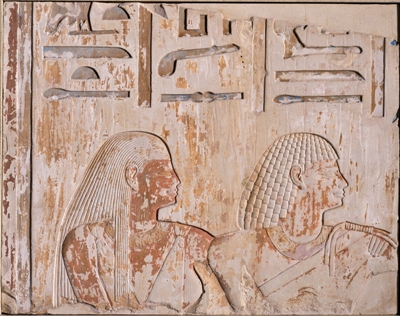SAM Art: Egyptian Art Friday
SAM is honored to welcome Dr. Sarah L. Ketchley, Visiting Scholar in the Department of Near Eastern Languages and Civilization at the University of Washington. Dr. Ketchley is also currently undertaking research on SAM’s collection of Egyptian art. This is the first of several blog posts she will be writing.
Memorial Day Weekend heralded the much-anticipated return to Seattle of selected treasures from the tomb of Tutankhamun in an exhibition running through January 2013. SAM hosted the exhibit when it visited Seattle in 1962 and again in 1978; this year Tutankhamun: The Golden King and The Great Pharaohs will be on display at the Pacific Science Center in time to celebrate Seattle Center’s 50th anniversary. Although the famous golden funerary mask no longer leaves Egypt, this year’s touring exhibit features a number of iconic artifacts from Tut’s tomb, as well as a wide range of artwork from all periods of Egypt’s ancient history. What many exhibit visitors may not realize is that SAM downtown has a collection of Egyptian artwork permanently on display. In keeping with the “Tutmania” sweeping the city, over the next few months SAMart will showcase a selection of ancient Egyptian art.
This first piece comes originally from the tomb of Montuemhet (TT34), which is situated on the West Bank of the Nile opposite ancient Thebes (modern Luxor) in an area known as the Asasif. Montuemhet was the most influential administrator in this region during the period ca. 680 – 648 BC (straddling the reign of Taharqa at the end of the Kushite Twenty-fifth Dynasty, the sack of Thebes by the Assyrians and the reign of Psammetichus I of the Saite Twenty-sixth Dynasty). While a number of statues portraying him are preserved, his tomb is without doubt his most impressive legacy. The practice of constructing large individual tombs with complex schemes of decoration underwent a remarkable revival at Thebes during this period, some four hundred years after its virtual abandonment. Montuemhet’s tomb is one of the largest built during this time; its mud brick pylons remain a distinctive landmark on the Asasif plateau even today. The extensive substructure includes two sunken courts, one with a series of ten chapels leading off of it, and a large number of underground rock-cut rooms, almost all of which have carved decoration and texts.
The SAM Montuemhet relief is a fine example of sunk carving on a limestone block. The tomb owner sits with one of his three wives, Shepenmut (also seen as “Shepetenmut”), the remains of three columns of hieroglyphs above their heads. There are traces of original paint and vertical chisel marks on the piece (the latter was common in tomb decoration from this period in Thebes). The tomb owner’s shoulder-length wig has long curls hanging in vertical rows, and he wears a plain collar and a sash with a knotted fastener on his left shoulder. Traces of paint on his chest in the form of small rosettes indicate that he originally wore the priestly leopard skin. His near arm would have been held over his lap, his far arm held outwards towards an offering table (now lost). The wife wears a dress with knotted straps leaving her breast exposed, a small plain collar and a long striated wig.
Stylistically, this fragment recalls relief work from the Old Kingdom, some two thousand years earlier. The deliberate harking back to a period in the distant past perceived of as ‘classical’ is one of the characteristic and distinctive features of tomb art from the Saite Period; and can perhaps be explained by a desire to reinforce Egyptian patriotic sentiment after a period of foreign occupation. That the Saite artist added a few new stylistic twists of his own makes this artwork quite unique and compelling.
